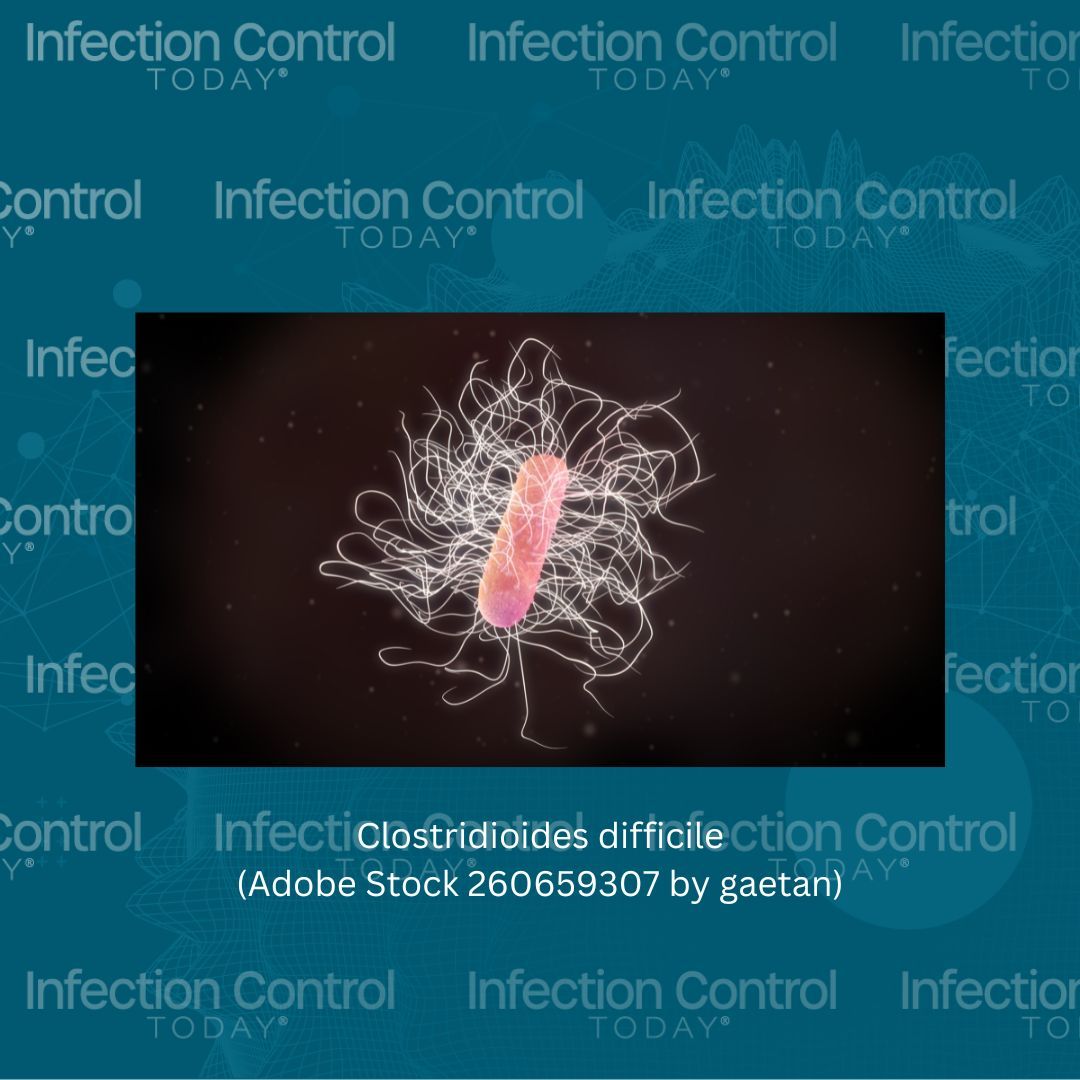Navigating Clostridioides difficile Testing Guidelines: Addressing Adherence Challenges in Health Care Settings
A study presented at the Society for Healthcare Epidemiology of America (SHEA) conference evaluated adherence to laxative administration guidelines before CDI testing in Veteran Affairs (VA) hospitals and explored associated demographic and contextual factors.
Clostridioides difficile
(Adobe Stock 260659307 by gaetan)

This story first appeared on our sister brand, Contagion®Live.
Clostridioides difficile infection (CDI) remains a major health care challenge, causing around 500,000 infections and 30,000 deaths each year in the US. Despite guidelines that recommend against testing for CDI shortly after laxative use to avoid misdiagnoses, this practice is often ignored.
The results reveal significant adherence issues in an analysis of 7,326 tests for 4,888 patients at VA Medical Centers in Illinois, Wisconsin, and Michigan. Most of the patients tested were White (61.8%) and male (95.6%), with an average age of 70. Notably, about 59% of the tests were conducted within 48 hours of laxative use. Black and Hispanic patients were less likely to undergo guideline-noncompliant testing compared to White patients. Tests from rural facilities, long-term care units, and intensive care units showed higher non-adherent testing. Tests not following guidelines more frequently resulted in adverse outcomes.
This pattern aligns with results from non-VA studies, showing widespread non-compliance with CDI testing guidelines, particularly in settings such as ICUs and long-term care facilities. The noted racial disparities in testing practices suggest a potential area for improving guideline adherence.
This retrospective cohort study focused on adults admitted to VA Medical Centers from January 2019 to December 2022 who underwent CDI testing. The tests used were Toxin B gene Polymerase Chain Reaction or Toxin Enzyme Immunoassay. Data on laxative use, demographics, admission details, and comorbidities were extracted from the VA Corporate Data Warehouse. Testing that did not adhere to guidelines was defined as a CDI test ordered within 48 hours following laxative use. Factors influencing nonadherent testing were analyzed using clustered binomial logistic regression, and statistical analyses were conducted using SAS 9.4.
Further research is needed to explore the implications of inappropriate testing, which include unnecessary treatments and increased health care costs. Diagnostic stewardship should be prioritized to enhance compliance with CDI testing guidelines across VA hospitals.
Reference
Geneva Wilson, PhD. High Prevalence of Laxative Use Among Those Tested for Clostridioides difficile Infection in VA Hospitals. Poster #94 was presented at SHEA 2024. April 16-19, 2024. Houston, TX.
Invisible, Indispensable: The Vital Role of AHRQ in Infection Prevention
March 25th 2025With health care systems under strain and infection preventionists being laid off nationwide, a little-known federal agency stands as a last line of defense against preventable patient harm. Yet the Agency for Healthcare Research and Quality (AHRQ) is now facing devastating cuts—threatening decades of progress in patient safety.
The Sterile Processing Conference Survival Guide: How to Make the Most of Your Next Event
March 25th 2025From expert speakers to cutting-edge tools, sterile processing conferences, like the 2025 HSPA Annual Conference and the SoCal SPA's Spring Conference, offer unmatched opportunities to grow your skills, expand your network, and strengthen your department's infection prevention game.
Redefining Material Compatibility in Sterilization: Insights From AAMI TIR17:2024
March 24th 2025AAMI TIR17:2024 provides updated, evidence-based guidance on material compatibility with sterilization modalities. It offers essential insights for medical device design and ensures safety without compromising functionality.
Invisible, Indispensable: The Vital Role of AHRQ in Infection Prevention
March 25th 2025With health care systems under strain and infection preventionists being laid off nationwide, a little-known federal agency stands as a last line of defense against preventable patient harm. Yet the Agency for Healthcare Research and Quality (AHRQ) is now facing devastating cuts—threatening decades of progress in patient safety.
The Sterile Processing Conference Survival Guide: How to Make the Most of Your Next Event
March 25th 2025From expert speakers to cutting-edge tools, sterile processing conferences, like the 2025 HSPA Annual Conference and the SoCal SPA's Spring Conference, offer unmatched opportunities to grow your skills, expand your network, and strengthen your department's infection prevention game.
Redefining Material Compatibility in Sterilization: Insights From AAMI TIR17:2024
March 24th 2025AAMI TIR17:2024 provides updated, evidence-based guidance on material compatibility with sterilization modalities. It offers essential insights for medical device design and ensures safety without compromising functionality.
2 Commerce Drive
Cranbury, NJ 08512